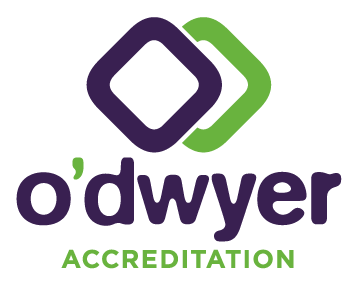We see that many laboratory quality managers inadvertently waste time due to misinformation and misunderstandings about NATA requirements. They may do too much, creating unnecessary or inefficient processes in an effort to please the NATA assessor. They may do too little in the areas that really matter – the things that will actually affect test results. Or they may simply hit their head against a brick wall trying to change lab processes that don’t really need to change.
If only these well-meaning, conscientious (but often over-worked) lab quality managers had inside access to the tools and tips of others who have walked the same or a similar path with NATA. If only they could pick the brains of their peers in exchange for sharing their own insights.
Well, that’s what the Australian Organisation for Quality’s new Special Interest Group aims to provide for labs. The Laboratory SIG is a virtual space where labs can speak openly about issues, pitfalls and wins with NATA and beyond. The idea of the group is not just about getting the NATA “tick” but about helping labs succeed in all areas of quality that determine their lab’s success.
Bringing Australian labs together over discussion and professional development
When it comes to negotiating NATA issues such as the seemingly “new” requirement about addressing risk and opportunity in ISO 17025, there are common traps and common workarounds across different kinds of testing. Beyond that, implementing excellence and continual improvement in your quality system is not something you can do alone, or by guesswork.
Collaborative exchange with peers is one of the most valuable learning resources we have at our disposal – successful organisations and managers understand this well. The SIG serves to facilitate this exchange, linking you up with other labs as well as NATA accreditation and quality experts on a monthly Zoom call. Each call has a focus topic, with time for breakout groups to get to the more granular level of the discussion. You can opt-in to follow the discussion topic offline in a chat group where participants post further questions and answers.
Labs discuss their approach to risk and opportunity management
The AOQ kicked off their first Laboratory SIG in June, focusing on the topic of Risk and Opportunity Management. A range of participants were eager to join the first discussion including 8 from medical, metallurgical, paint and workplace health and safety labs, as well as 6 consultants from across Australia. Various approaches to managing risk were shared with some using purpose-built enterprise-wide systems, some using commercial software, and others using home-built systems that didn’t seem to meet the business risks terribly well. For some it has been a case of bolting it onto the existing CAPA process and escalating it as appropriate to those higher up the tree, depending on the identified risk. For others, it is just a part of their everyday work.
The key take-homes were:
- Labs taking on riskier work due to increased competition in the CoVID 19 economy. Therefore, adequately addressing risk and opportunity in the tender process is increasingly critical for labs.
- Some risk is inherent in lab work. i.e. risk is not a bad thing per se but it is important that it is known and addressed.
- Need to consistently account for and address known risks, expose hidden risks, and simultaneously identify opportunities.
- The requirement to address risk and opportunity is aimed at ensuring test results are as reliable as possible for the customer (which is essential for lab’s viability/business). It can be addressed in a range of ways:
- Treating all risks and opportunities through the same system, to evaluate and ultimately come up with an action plan.
- The bottom-up approach where you follow a process end-to-end and identify the risks that exist in the “live” process
- The “top-down” approach, common in larger organisations, where broad categories of risk are identified such as equipment functionality, resource availability and staff training and addressed in procedures documents.
- Approaches such as “safety notes” for a safety risk
- Complicated spreadsheets depending on the type of task and the level of the organisation
- Creating a risk register and populating it with identified risks
- Acknowledging that the purpose of measurement uncertainty calculations is to identify major sources of error in methods.
- Some difficulties with NATA include:
- understanding the requirements to address opportunity & risk
- NATA putting unreasonable requirements on labs
- the benefits of option A or B Management systems (with B sometimes causing labs to get non-conformances even though they have identified and are addressing a shortfall in their system)
- Common difficulties for auditors & quality managers
- Explaining to lab management the level of risk in a certain activity. Lab management saying “it’s never happened so it will never happen”. How to clearly flag risks in audit reports.
- Getting management buy-in for the risk assessment process. Management leaving it up to the quality manager to deal with.
The aims of the Laboratory Special Interest Group
- To bring together laboratories across Australia to learn from each other on matters to do with quality and laboratory accreditation.
- To provide a place where laboratory quality managers can openly share issues they are facing with respect to quality and accreditation.
- To provide a setting for professional development of laboratory quality professionals through formal learning seminars with experts in various aspects of quality.
How to join the laboratory SIG
Membership of this group is open to AOQ members only. Join AOQ for a very reasonable annual fee, then request to join the Laboratory SIG.
If you’re already a member of AOQ and didn’t receive an invitation to the last SIG, email admin@aoq.net.au to request membership.



